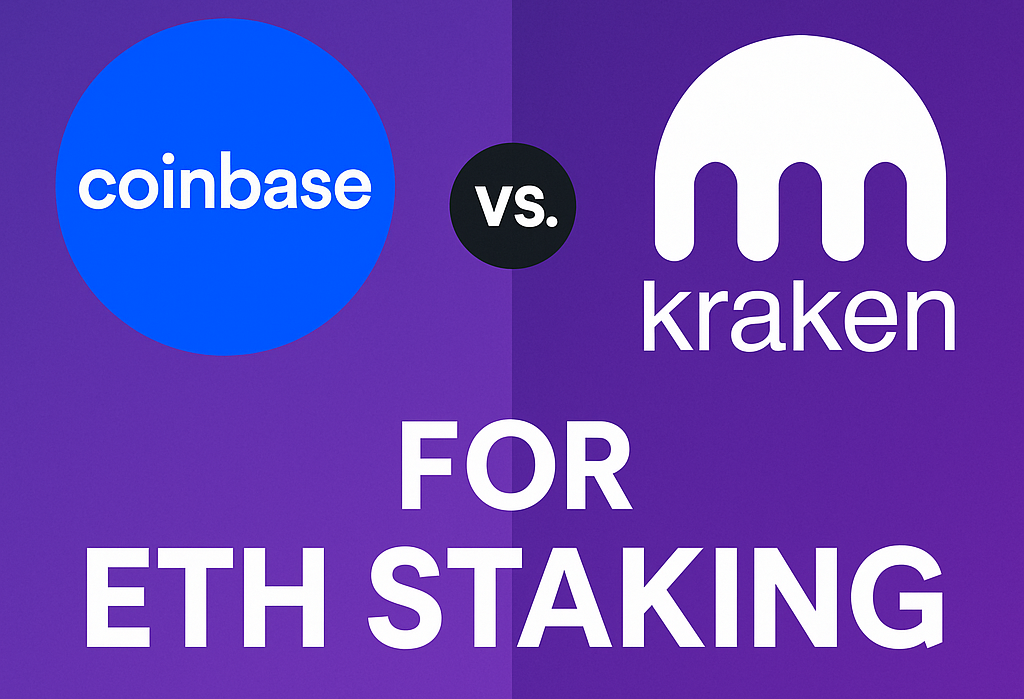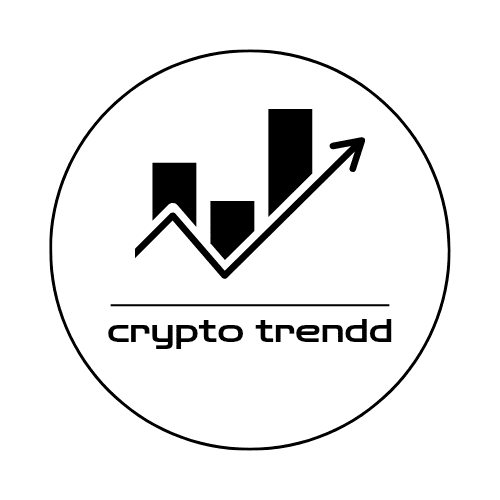Coinbase vs Kraken for ETH Staking (2025)
By Abhishek chandravanshi

If you’re holding Ethereum and thinking about staking it to earn some passive income, you’ve probably come across two big names: Coinbase and Kraken.
They’re both regulated, trusted, and make it super easy to stake ETH. But which one gives you better rewards? Which platform is more flexible? Which charges fewer fees?
Let’s break it all down—no fluff, just real talk based on what actually matters in 2025.

💡 Quick Summary (Featured Snippet Outline)
| Criteria | Best Option |
|---|---|
| Best for beginners | Coinbase |
| Higher rewards | Kraken |
| Lower fees | Kraken |
| Easier to use | Coinbase |
| Faster unstaking | Kraken |
| Stronger insurance | Coinbase |
| More control | Kraken |
TL;DR: If you’re new to staking and want simplicity, Coinbase works. If you’re chasing better returns and more control, Kraken is probably your move.
What Even Is ETH Staking?
Alright, quick refresher: when Ethereum moved to proof-of-stake, it stopped using miners and started using validators—people who lock up ETH to help run the network. In return, they earn rewards.
You can either:
- Run your own validator (requires 32 ETH and a lot of setup), or
- Let a platform like Coinbase or Kraken stake ETH for you.
The second option is what most people go for. But here’s the catch: different platforms offer different APYs, fees, and flexibility—so choosing the right one matters.
Coinbase ETH Staking: Simple, Safe, But a Bit Pricey
Let’s start with Coinbase. It’s the go-to platform for a lot of U.S. users—clean interface, strong security, and fully regulated.
What You Get:
- Estimated APY: Around 3.0% (after fees)
- Minimum stake: Just 0.1 ETH
- Unstaking: Takes a few days (not instant, but fairly smooth)
- Fee: Coinbase takes up to 25% of your staking rewards
Yep, 25%. That’s a chunk.
Why People Like It:
- Super easy to use (great for beginners)
- Integrated with Coinbase Wallet
- Has some insurance and regulatory protections
- You can track everything from your mobile app
Internal link suggestion:
👉 Check out all staking options on Coinbase here
Kraken ETH Staking: More Rewards, More Control
Kraken doesn’t play around when it comes to staking. It’s not as sleek as Coinbase, but the numbers speak for themselves.
What You Get:
- Estimated APY: Around 3.8% (after fees)
- Minimum stake: Just 0.0001 ETH
- Unstaking: Available and typically faster than Coinbase
- Fee: Kraken takes 15% of your staking rewards
So you’re paying less in fees and getting more frequent payouts—in some cases, daily.
Why People Love It:
- Better net rewards
- Transparent performance reporting
- Lower minimums
- More experienced stakers love the extra control
Internal link suggestion:
👉 Compare Kraken’s staking rates with other platforms
Staking Rewards: Who Actually Pays More?
Let’s keep it simple:
| Platform | Gross APY | Fee | Net APY (2025 avg) |
|---|---|---|---|
| Coinbase | ~4.0% | 25% | ~3.0% |
| Kraken | ~4.5% | 15% | ~3.8% |
So yeah—Kraken usually gives you more ETH at the end of the day.
Unstaking: Can You Access Your ETH Easily?
Since Ethereum’s Shanghai upgrade, unstaking is finally allowed—but each exchange handles it differently.
- Coinbase: You’ll have to wait 3–5 days after clicking “unstake.”
- Kraken: Slightly faster and more transparent about wait times.
If liquidity matters to you, Kraken gets the edge.
Internal link suggestion:
👉 Try our staking calculator to estimate rewards and lock-up periods
User Experience: Which Is Easier to Use?
Coinbase wins this one hands down.
- The interface is clean.
- You can stake ETH with one click.
- All your coins are visible in one dashboard.
Kraken? It’s not hard, but it’s definitely made for users who’ve been in the game a bit longer. More features, but also more complexity.
Security: Can You Sleep Easy?
Both platforms are very secure, but here’s the difference:
- Coinbase offers insurance against some crypto-related theft or hacking.
- Kraken has never been hacked and runs one of the most respected cold storage systems.
So Coinbase feels safer for beginners, but both are very legit.
Fees: Who’s Taking a Bigger Cut?
This is where things really separate:
- Coinbase charges a fat 25% commission on your rewards.
- Kraken takes only 15%.
That 10% gap makes a difference over time—especially if you’re staking thousands of dollars worth of ETH.
Regulations: What U.S. Users Need to Know
This one’s tricky. Both exchanges have had run-ins with U.S. regulators:
- Kraken had to pause staking services temporarily in some states.
- Coinbase tweaked how they present staking but kept it live for most users.
Always check what’s available in your state before staking, because this landscape is still evolving.
Internal link:
👉 Is staking crypto legal in the U.S.? Here’s what to know
So… Coinbase or Kraken?
Let’s recap:
- If you want ease of use, don’t care about maximizing APY, and want something you can trust without thinking—go with Coinbase.
- If you’re looking to optimize your rewards, want faster access to your ETH, and don’t mind a slightly steeper learning curve—Kraken is the winner.
Honestly, a lot of people use both. Stake some ETH on Coinbase for convenience, and the rest on Kraken for better returns.
🧠 FAQs
Is ETH staking on Coinbase safe?
Yes—Coinbase is a publicly traded U.S. company with insurance policies in place for added peace of mind.
Can I unstake my ETH anytime?
Mostly yes. Both Coinbase and Kraken allow unstaking now, though it’s not always instant. Kraken tends to be faster.
Does Kraken really give better rewards?
Yep. Lower fees and higher APY = more ETH for you in the long run.
Which is better for a beginner?
Coinbase. Super simple, clean UI, and perfect for first-timers.
What if I want even higher rewards?
Consider DeFi staking or liquid staking platforms like Lido or Rocket Pool—but remember, higher rewards often come with higher risks.
👉 Compare DeFi vs Exchange staking here
Want help tracking your ETH staking rewards?
Check out our free ETH staking calculator and see how much you can earn with Kraken, Coinbase, and more.
